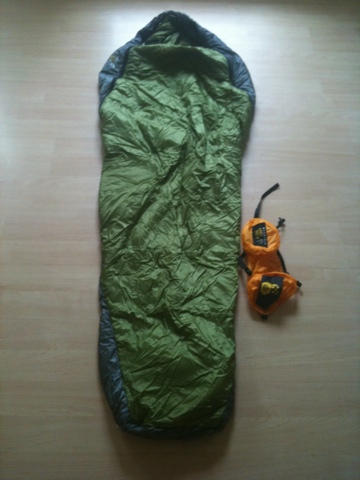We wanted new sleeping bags for a multi-country trip, during which we planned to do some hiking and camping. We expected to never go anywhere that would drop below 50-degrees Fahrenheit, so our selection criteria was: a 45-degree bag, super light, and compression into as small a stuff sack as possible. It also had to be a synthetic material, as Jen’s allergies and down fill don’t work well together.
Our internet research led us to choose the Mountain Hardwear Ultralamina 45. It weighs in at just 1 pound, 9 ounces; compresses into a 6-inch stuff sack; and is synthetic. It has good reviews.
We used the bags during twelve nights on Western Australia’s Bibbulman Track. As things would have it, we encountered what the locals said was an unusually cold spring, with nightly temperatures dropping into the lower thirties and upper twenties, well outside the sleeping bag’s design parameters. So, we froze at night — my fault for not coming suitably equipped to handle unexpected deviations from the weather averages.
In truth, we have not properly tested the bags in the conditions for which they were designed, but I do like what I see. Since we are warm weather folks, I don’t want to get warmer bags that will only become sweat sponges, but I will be adding sleeping bag liners to our kit as insurance against those colder-than-usual nights.
An update on these bags, written on September 18, 2015:
These bags are increasingly disappointing.
Since last writing about them, we have taken the bags kayaking through the Bahama’s Exuma Cays, kayaking on Lake Powell, kayaking on Lake Mojave, camping in the Great Smokey Mountains, camping in the Sierra National Forest, and camping in California’s high desert.
The bags are rated for 45-degrees; but as we first discovered on Australia’s Bibbulman Track, that is not an accurate comfort-zone rating. At 45-degrees, we freeze our asses off in these bags. Use of a silk liner to add warmth has become standard practice, even when temperatures are in the low 50s.
While we appreciate the light weight and small compressed size of these bags, their limited temperature range — their real comfort range — is too poor to warrant buying them or using them. We just completed a five-day backpacking trip through the Emigrant Wilderness in the high Sierras, and we did not take these bags. Instead, we took rectangular bags made by Marmot. The Marmot bags were heavier and bulkier, but at least they were true 40-degree bags. Not freezing was worth the increased weight and size.
We cannot recommend these sleeping bags.
